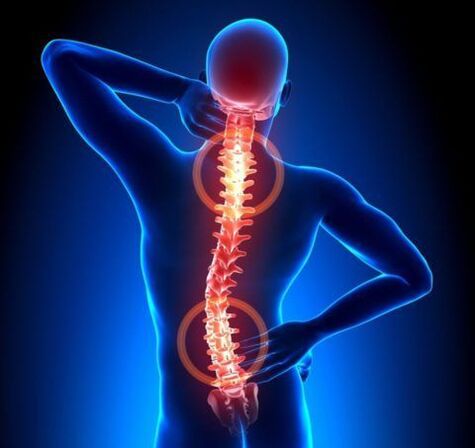
Many people aged 30-35 complain about back pain.The cause of these pain can be a spine disease.Osteochondrosis is a disease that occurs in medium people, but is more often revealed in patients after 40 years.
OsteoHondrosis - What is that disease and what is his danger?
This term means a dystrophic process of cartilage and the bone tissue in question.In modern medical practice, osteochondrosis is called the degenerative-dystrophic disease of spine and intervertebral disks that play the role of shock absorber.The risk of illness is that the affected disk is almost impossible to return, without the appropriate treatment, the disability is possible.
OsteoHondrosis is a common disease?Statistics are not satisfied.About 85% of the world's population suffers from this disease.
This disease is the most common form among all the diseases that affect the spine.And according to the prevalence, it is immediately after the disease of the cardiovascular system.
The essence of the disease
So osteochondrosis - what is it?This is a chronic disease that affects the compounds, most common spine.
The spinal column consists of 24 vertebrates.Between the two spine is a disc, whose purpose is to soften and depreciate the cargo.
In a normal state drive is quite elastic and can withstand significant loads.In the center of the disk there is a full core with lots of water.For some reason, the core loses hydrophilic properties.
As a result, disk delay, he decreases heights and deform.In later stages, bone tissue growth occurs with the formation of growth - osteophytes that compress peripherals and spinal cords.It is a osteochondrose of the spine.
Causes of pathology
Despite the fact that osteochondrosis is quite common, the reasons why pathology develops is not fully established.
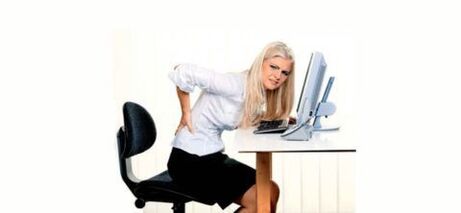
The main factors are considered:
- Excessive load on spine;
- injuries;
- Professional harmfulness - weight lifting or extended work in an unpleasant, relent loan;
- excess body weight;
- heredity;
- Breach of holding.
Osteochondrosis develops into one or another in almost all people of the elderly and one is one of the body aging process.
Phases, forms and symptoms of disease development
Experts vary 4 stages of the disease:
- 1. Phase- Moving the disk core on the edge;
- 2. Phase- the appearance of cracks in the cartilage wheels and the instability of the vertical part;
- 3. Phase- a complete rupture of a disk with a loss of core in the stalk of spine, while the roots of the spinal cord are possible;
- Fourth phase- Greet changes not only in the intervertebral disk, but also in the surrounding fabrics.
The main symptom of the disease is pain.It can be acute with high intensity or stupid, moderate manifestation.
In addition to pain, there are:
- a painful tension of the back muscle;
- skin stiffness on arms and legs;
- Limitation of the amount of movement;
- Weakness in limb muscles;
- thinning arms and legs;
- Sudden dizziness.
These are general manifestations for all formology forms.Depending on the spine in which changes are localized, three forms of diseases with characteristic symptoms are different.
Table no.1. Forms of osteochondrose and their characteristic symptoms:
| Disease form | Symptoms |
| Osteochondrosis in the neck | Changes in this department lead to pushing blood vessels and weakened microcirculations.For this reason, a person has a permanent dizziness.Sometimes it leads to unconsciousness.In ears and blinks colored spots in front of the eyes. |
| Osteochondrosis in thoracic vertebrates | This form of disease is observed by acute chest pain.The disease can cause the intercostal neuralgia to advance and worsen the course of heart pathology. |
| Osteochondrosis in the lumbar area | The pathology in the lower back is manifested in pain in the gluteal region, the fall of the IKR tone.Complication can be a radiculite, which is accompanied by a pain that spreads throughout the leg. |
Due to the pathology of vertebral disks, a large number of disorders in the body appears: pushing nerves, swelling, bloodstream and fibrosis of the surrounding tissues.These changes cause different symptoms, which complicates the diagnosis and prescribe the appropriate treatment without care.
Clinical manifestations
The symptoms of the disease depends on where the lesion is mainly.In the sections below, we consider signs characteristic of each variety of diseases.
Cervical ward
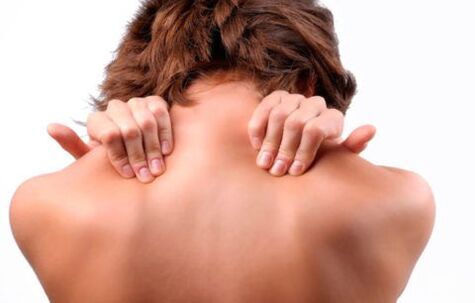
The main symptoms of damage to the neck spine include:
- discomfort, neck and shoulders;
- muscular hypotonus;
- Increased sweat;
- finger stiffness;
- violation of movement coordination;
- Headaches, dizziness;
- Hearing and vision problems;
- Hypertension.
With the advancement of disease and damage to the nearby arteries and nerves, one of the following syndromes can be developed:
- Vertebral artery;
- cardiac;
- hypertension;
- root;
- Cerrvikal migraine.
Violation of blood circulation in spine and this hypoxia of brain tissues are dangerous consequences of osteochondrose.
This syndrome manifests:
- System / Periodic dizziness;
- weakening vision;
- partial or complete hearing loss;
- Sometimes - unconsciousness.
Important!Neurological manifestations of osteochondrose spine often must distinguish with the brain atherosclerosis, depth and other pathologies.
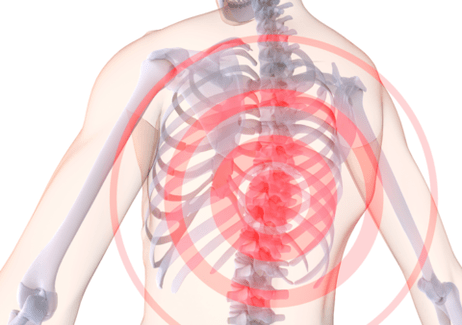
Thoracic region
Compared to other forms of disease, thoracic osteochondrose is manifested less pronounced.
Among its symptoms:
- chest pain, increasing at night or with extended in one position;
- discomfort, a sense of squeezing between the spatula;
- Strengthening pain during deep breathing.
If the disease is not treated, progressing, causing damage to the nearby and nerves located nearby.
Signs of development Complications of osteochondrosis of the spine of this localization may be:
- Skin arminess in some areas, feeling of creeping "goosebumps";
- Skin itch, ignition;
- Cooling of limbs;
- nail frailness;
- the handed skin;
- Pain along Esophagus and Pharynx;
- The disorders of the gastrointestinal tract.
In addition, the chest localization of the disease is characterized by two specific symptoms - Dorsago and Dorsalgia.
Dorsago is sudden, sharp and very intense chest pain, "thoracic shift".It can occur with extended in the same position, monotonous work.
Pay attention!During the breast, the pain is so serious that patients are scared even if additional inhalation are going.
Dorsalgia is less intense, but a monotonous painful sensation that can last up to 2-3 weeks.They are intensified by deep breathing, preferences.
Lumbar department
Osteochondrosis of the lower spine, namely lumbar, occupies the leading position on prevalence.
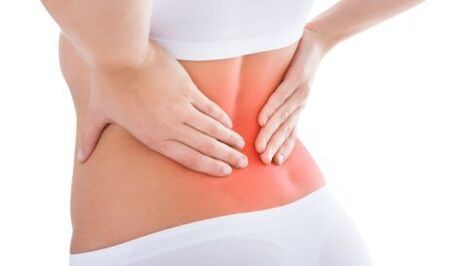
Among his characteristic symptoms:
- TUP, a more frequent pain in lower back pain, radiant in the leg;
- Discomfort, intensification when changing the position of the body, sneezing, cough, trying to raise weights;
- Constant muscle spasm in the lower back;
- Lights in the lower back;
- Damaged sensitivity on skin buttocks, hips, legs, feet;
- a feeling of creeping goose on the lower extremities;
- Dry, skin peeling.
Sacral department
Osteochondrosis of the sacral spine is extremely rarely in isolated and usually "continuation" of lower damage to lumbar damage.
This explains the characteristics of his symptoms:
- Pain in the lower back, as well as in a sealing nerve;
- Sharp "shelters" throughout the leg;
- an unpleasant feeling of discomfort in the back of the thighs;
- Dinner limb stiffness;
- Parez, as well as unstable symptoms of damaged motor activity.
Important!Osteochondrosis of the lower spine can lead to thus extremely dangerous complications as a reduced blood supply to the cord of the spinal cord and mineopathy compression.
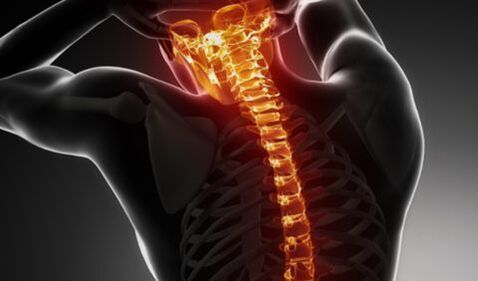
Common osteochondrose
The common form or osteochondrosis of all parts of the spine is the most difficult version of pathology.Due to the expanse of the defeat, his image may be extremely diverse and included almost all the symptoms described above.
Diagnostic methods
The appearance of the above appeals requires an appeal to the medical institution: the patient must examine the patient.The diagnosis of osteochondrose should be complex and very thorough.
Standard instruction include the following phases:
- Collection of complaints and anamnese.
- Clinical inspection.
- X -Ray examination.
- Modern methods (CT, MRI).
Implementing talks with the patient, the doctor should find out:
- that torment the patient;
- What is the place of the most common unpleasant sensation;
- What is their intensity and duration;
- which causes their strengthening;
- which helps to carry with pain.
Important!Be sure to tell your doctor how long you care about such complaints and have you received any treatment earlier.
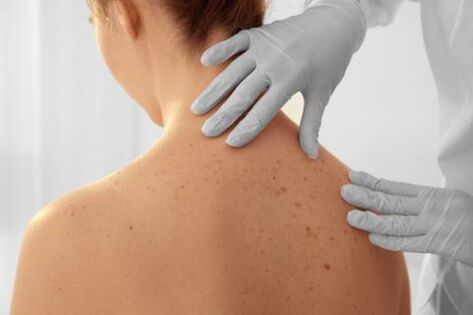
During the clinical inspection, the specialist assesses:
- The position of the patient's body, his walk, the scope of active and passive movements;
- Presence of skin damage, redness, peeling;
- symmetry of healthy and sick body parts;
- The presence of muscle spasm;
- Radiation area of pain;
- The presence of pain, temperatures and other types of sensitivity.
During radiography, each spine for better visualization is studied individually.Images are performed directly, laterally and (according to the indications) of two leather projections.In order to assess the phase and severity of degenerative dystrophic changes, the X-ray classification of osteochondrosis of the spine of the lukewarm lounge is used.
Table: X -Ray Stages of Osteochondrose Spine:
| Phase | Description |
| And (+) | Unpersed lordosis changes in a small number of segments |
| II (++) |
|
| III (+++) | Expressed changes, significant narrowing of intervertebral holes |
| IV (++++) | Significant narrowing of intervertebral holes, mass exostosis, often irreversible changes |
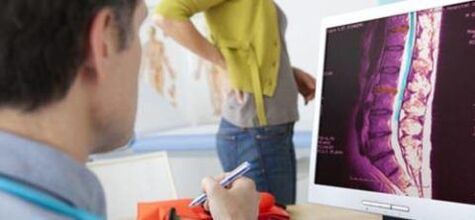
With insufficient content of the information of the R-Picture, the patient can be prescribed with more modern tests-CT (targeted images of one or more spinal column segments) and MRI (visual diagnostic method based on electromagnetic radiation properties).
Treatment
First of all, the doctor explains the patient what is osteochondrosis and how to treat.He discusses a set of measures that must be performed for a long time.
Disease therapy is done taking into account the scene.In the initial period of the disease, massage, physiotherapy, physiotherapy exercises were indicated.But both the dystrophic process progresses, various orthopedic devices for spine immobilization should be used.Drug treatment is needed.
Surgical intervention is marked with complications and inefficiency of conservative treatment.
Medications
The most important tasks of treating pharmacological drugs are facilitating pain, eliminating inflammation of nerve roots, renewal of the structuring cartilage, improving blood circulation and nutrition, stopping the development of pathology.There are several groups of medications that can be prescribed in this case.
The pharmacies are represented in different forms and in a wide variety.The price of medications can be different and you can always choose the most favorable.
Table no.2. Medications used in conservative therapy of osteochondrose:
| Pharmacological group | Therapeutic effect | Instructions for use |
| Chondroprotectors | Slow the processes of crispers degeneration, contributes to its renewal. | Take 1 capsule a month.If necessary, the course of treatment is repeated. |
| Nsaid | It has an anesthetic effect, reduces the inflammatory process. | Take a pain pill.With strong pain, intramuscular injections of the drug are used. |
| B Vitamins | Improves the conductivity of the nerve impulse, restores microcirculation in the area of the affected cartilage. | The flow of treatment in intramuscular injections is carried out. |
| Musorelaxans | Relaxes muscles, relieves tension, makes pain easier. | Take one tablet 2 times a day. |
Medications are prescribed according to medical testimony.Self-help can be inefficient, and in some cases it even harms.
Fiziotherapy for osteochondrose
What to do with osteochondrose, except for medications, to accelerate recovery?One of the most efficient methods of treatment of this disease is physiotherapy.
Its advantage is a selective effect on the focus of the disease.Contributions for physiotherapy to reduce pain, elimination of inflammation and increase general immunity.With the help of muscles relaxing, metabolic processes and blood circulation is normalized.
For osteochondrose, they are successfully used:
- Magnetotherapy;
- Laser therapy;
- shock therapy-wave;
- quartz;
- electrophoresis;
- The effect of low frequency electrical currents.
Physiotherapy is not done if the patient is in serious condition, with the deterioration of diseases, oncological diseases and mental disorders.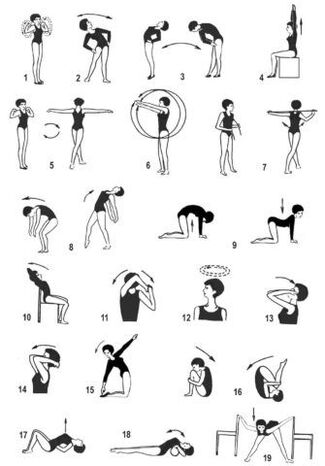 In other cases, physiotherapy is a beneficial effect on the recovery process, increases the effect of medications, which reduces their dose.
In other cases, physiotherapy is a beneficial effect on the recovery process, increases the effect of medications, which reduces their dose.
Medical physical education
Physical education classes are prohibited in an acute period of the disease.After eliminating this period, the doctor prescribes therapeutic exercises that develop together with the instructor individually for each patient.
With the help of exercise, the muscle corset is stronger, which prevents the curvature of the spine and allows you to properly arrange the load on the vertebral.With regular physical efforts, medicinal substances penetrate the spine in higher concentrations than in their absence.
It is necessary to engage in the leadership of an experienced instructor and carefully monitor their condition.With discomfort and strong pain, exercise should be stopped.
Prevention
Knowing what osteochondrose and its consequences will be useful to think about prevention.
Preventive measures are quite simple, easy to perform everyone who cares about their health:
- injury prevention;
- Regular physical training (swimming is very useful);
- maintain normal weight;
- Do not load the spine;
- Follow the correctness of posture;
- not be in one position for a long time;
- Avoid sudden movements when raising the weights.
When you are eligible for these rules, the remission period will be debt.
Osteochondrosis is a rather serious disease.But with timely seeking doctors and adequate treatment, it is possible to stop its destructive effect.
A doctor's questions
Neckache
Hi, tell me please.I'm 24 years old.In the last few months, the pain in the neck, the back of the head (sometimes still gives whiskey, eyes).I also notice a strong crumb in your neck, a terunt and stiffness of hands, tongue and heaven.
I doubt that osteochondrosis, because mum and grandma are from the youth with tortured symptoms.Where to start the exam?And one more question: Can I go to aerobics?
Create an R-scheme (CT) store and Doppler boats and doors.You probably developed the vertebral artery syndrome against the background of cervical osteochondrose.The further diagnosis and treatment plan can only be compiled after receiving the results of these tests.
It's better not to visit aerobics still.
Lumbar Osteochondrosis
Seven years, I tortured the lower back, the worsening of osteochondrose is almost every 2-3 months.Injections and tablets help in a short time, then it hurts back.I work as a postman, it becomes harder.Do I set up a disability?
Hello!The decision on the award of the group for people with disabilities brings ITU on the basis of a comprehensive study of your situation.You must first contact the therapist and subject to the exam.
As a rule, with lumbar osteochondrose, the disability group is not displayed.His reward is possible with the development of complications (protrusions, intervertebral hernia, etc.).But, again, I repeat, everything here is an individual.

























